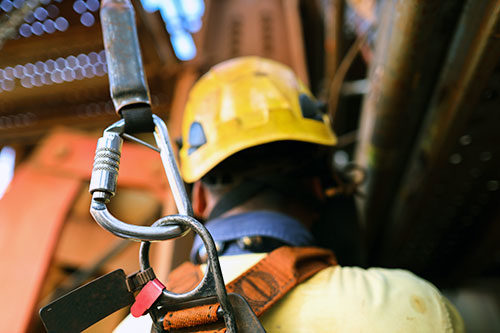Choose the right fall protection training partner
Who needs fall protection training? How often should it occur? Who can best conduct it, and does one size fit all?

Photo: Diversified Fall Protection
Responding is Kevin Kelpe, brand manager, Diversified Fall Protection, Westlake, OH.
In 2017, OSHA made sweeping updates to its standards on walking-working surfaces in general industry and personal fall protection systems (1910.140). Although the changes in the final rule affect manufacturers, employers and workers in many ways, some of the most important changes pertain to training and other fall protection services. Although these services are more expertise than equipment, they can best be provided by a fall protection integrator with practical experience designing and installing systems, and not an all-purpose training company. Not all training is created equal (even if it’s technically compliant).
OSHA’s 1910.30 standard requires employers to train employees on fall hazards and fall protection equipment, and to retrain these employees at regular intervals. Employers in general industry are also required to designate authorized, competent and qualified persons (three separate designations in the rule) who use, supervise the use of and install fall protection systems, respectively. And that’s not all! The rule now requires that anchorage connectors used for travel restraint, fall arrest and suspended access be inspected, tested, certified and recertified at varying intervals (1910.27 and 1910.140). The updated rule requires documentation produced during these activities to be maintained by building owners and made available for contractors who work on their properties.
Whew! Considering all of this, it’s easy to see why a company offering just one element of fall safety may not cut it. The most appropriate partner for employers would, first, have broad experience with eliminating hazards. They would then have hands-on experience designing solutions using their own products and those of other manufacturers, and experience installing and certifying those integrated systems. Employers should seek out an organization with many regional locations that put the required personnel in their backyard – a regional team of engineers, inspectors and trusted advisors to demystify compliance and give employers peace of mind. Employers also capture economies of scale if they can use the same provider for the equipment and all of the services required by law (to be clear, that’s training, inspection, testing and certification).
The 2021 Fall Experience Survey developed by the American Society of Safety Professionals further illuminated the employer’s need for access to deeper expertise. Survey respondents cited a lack of planning as the leading cause of falls. Also among the top 10 causes were a lack of training and competency programs. ASSP found that, in many cases, building owners had installed fall protection systems, but those systems were inappropriate for the circumstances in which the work was done. Or, in other cases, workers used connectors that were incompatible with the equipment installed and were injured even though they were trained and tied off, albeit improperly.
This may seem surprising, but it’s understandable; in recent years, many products promising more efficient compliance have become available. The market has responded to new regulation with lots of rapidly evolving technology. Indeed, we may be in the golden age of fall safety.
Paradoxically, however, this influx of options may be widening the gap between workers and safety for a time, as the market catches up to match employers with newly minted experts. This further emphasizes the need for a true partnership. A transactional relationship between providers and employers is no longer a suitable option to protect workers or businesses. Employers now, more than ever, require subject matter experts in fall safety. They require fall protection partnership for life.
Editor's note: This article represents the independent views of the author and should not be construed as a National Safety Council endorsement.
Post a comment to this article
Safety+Health welcomes comments that promote respectful dialogue. Please stay on topic. Comments that contain personal attacks, profanity or abusive language – or those aggressively promoting products or services – will be removed. We reserve the right to determine which comments violate our comment policy. (Anonymous comments are welcome; merely skip the “name” field in the comment box. An email address is required but will not be included with your comment.)

